
views
Washing Your Marble Counter Daily
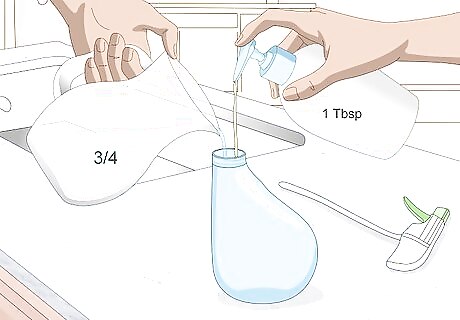
Mix dishwashing soap and water in a spray bottle. To make a gentle and effective everyday cleanser for your marble countertop, fill a spray bottle halfway to three-quarters full with warm water. Squirt approximately 1 tablespoon (15 ml) of a gentle, non-abrasive dishwashing soap and shake well to mix the two. You should never use an abrasive or acidic cleanser on marble countertops because it may etch the surface. Avoid soaps or cleansers that contain citrus juices, such as lemon, or vinegar. Similarly, don't use products like Windex on your marble countertops, as it can dull or etch the marble.
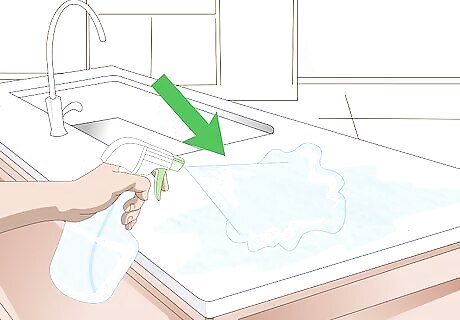
Spray the cleanser over the counter. After you’ve mixed the warm water and soap together, apply the cleanser to the countertop. Use a generous amount to ensure that the entire marble surface is treated. If there are areas with more residue than others, you may want to focus more of the cleanser in those spots.

Wipe the counter with a hot, wet cloth. Once you’ve applied the cleanser to the countertop, wet a clean cloth with warm water. Smooth it over the entire counter to remove the dirt and soapy residue. Continue wiping the countertop with the wet cloth until no residue remains. While it’s okay to scrub at stubborn spots on the marble with the cloth, you should never use an abrasive sponge or pad on the countertop. They can easily scratch the surface.
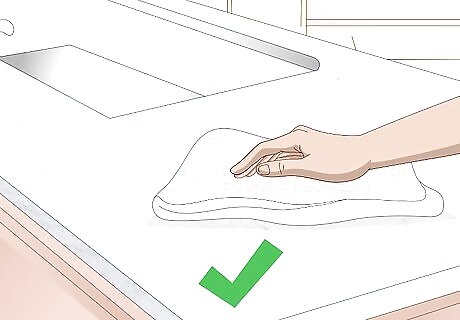
Dry the surface with a towel. When the counter is clean, wipe down the marble with a clean, absorbent towel to dry it. Use a buffing motion to get the most flattering finish for the marble. Be sure that you’re using a soft towel to dry the marble. Rough, scratchy towels may damage the surface.
Removing Stains from the Marble
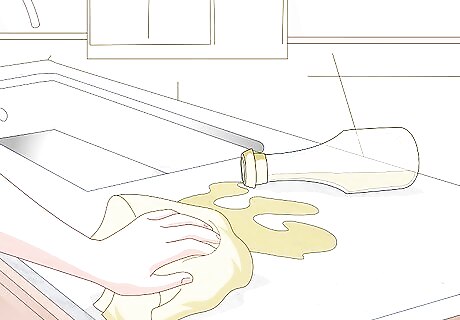
Wipe up spills as soon as possible. The key to keeping your marble countertop stain free is wiping up spills as soon as they happen. The longer wine, oil, or other substances sit on the marble, they greater the chance that they penetrate and cause a permanent stain. It’s particularly important to wipe up acidic stains, such as citrus juices, tomato sauce, or vinegar as quickly as possible. They can etch the surface of the marble and damage its appearance.
Treat oil-based stains with bleach, ammonia, or alcohol. Dab the product onto the stain. Once the stain lifts, use a clean cloth to wipe away any excess cleaner. Finally, buff the spot with a clean, dry cloth. Only use one cleaner on the stain. Don't mix them, as this can be harmful. In particular, bleach and ammonia produce toxic fumes when they're combined.
Use a hydrogen peroxide solution to treat organic or food stains. Mix a few drops of ammonia into a 12% hydrogen peroxide solution. Then, dab the solution onto the stain until it lifts. Next, wipe the area clean with a wet cloth. Finally, buff the area with a clean, dry cloth.
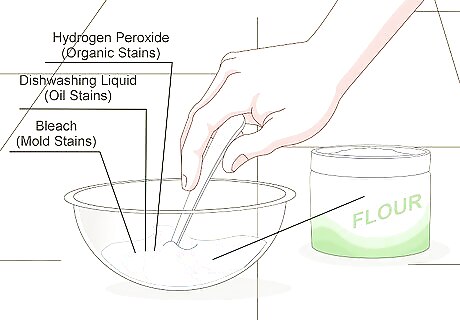
Mix up a poultice for a stubborn stain. To remove a stain from a marble countertop, it’s best to use a cleanser that can sit on the spot and penetrate it over time. That’s why a poultice with the cleaning ingredients is usually the best option. Choose the poultice ingredients based on the type of stain that you’re dealing with. For organic food stains, mix flour with hydrogen peroxide. For oil-based stains, mix flour with dishwashing liquid. For mold, mildew, fungus and other biological stains, mix flour with household bleach. No matter what type of poultice you’re making, mix the flour and liquid until you form a paste that’s the consistency of peanut butter. Always test the poultice on an inconspicuous spot on the countertop first to ensure that you won’t wind up making the stain worse.
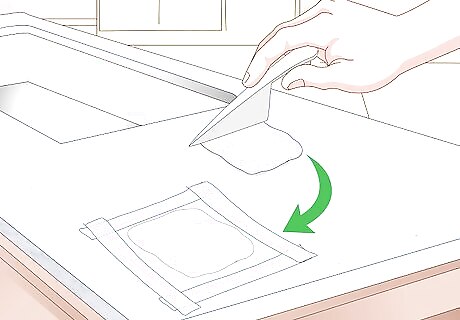
Spread the poultice over the stain and cover it. After you’ve mixed up the poultice, use a plastic putty knife to carefully spread it over the stained area of the countertop. Next, cut a piece of plastic wrap to cover the poultice and secure it in place with painter’s tape. Once it’s in place, poke a few holes in the plastic for ventilation. If you don’t have a putty knife, you can use any type of knife to spread the poultice on the counter. Don’t use regular masking tape to secure the plastic over the poultice. It’s too sticky and may dull the marble.

Allow the poultice to sit for about 24 hours. To lift the stain, the poultice must sit on the stain for a while. For a fresh, light stain, 10 hours may be sufficient. However, it’s best to wait a full 24 hours to be safe. If the stain is old, very dark, or extremely stubborn, you may want to leave the poultice in place for two to three days.

Scrape off the poultice. When you’ve allowed the poultice to sit on the stain for a sufficient amount of time, remove the plastic covering. Use a clean putty knife to carefully scrape away the poultice mixture and discard. Wipe the surface with a clean towel to make sure that the stain has disappeared. If the stain hasn’t disappeared, you can repeat the process with another application of the poultice.
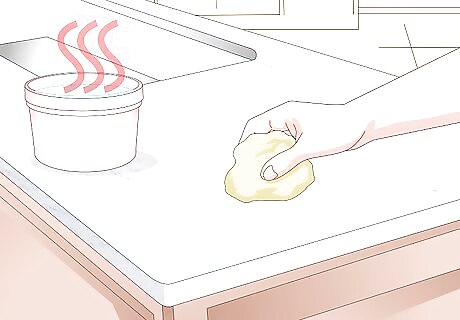
Rinse the countertop with warm water. After you’ve removed the poultice, wet a clean cloth with warm water. Wipe down the marble to remove any remaining residue. Be sure to use a soft cloth to avoid scratching the marble. A microfiber cloth is a good option.
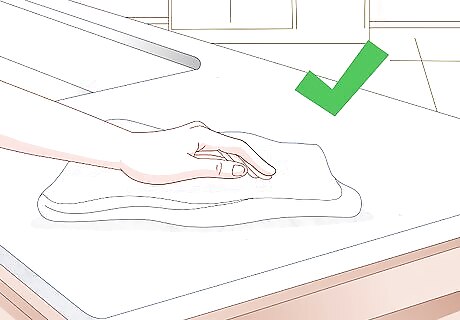
Dry the counter with a towel. When the countertop is completely clean, use a clean, soft towel to wipe it dry. Buff the marble gently to ensure an attractive finish.
Sealing a Marble Countertop
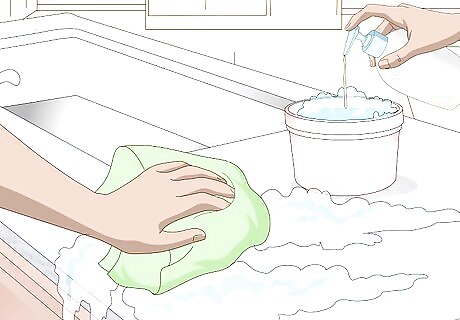
Clean the counter. Before sealing your marble countertop, it should be clean. Use the dishwashing soap and water mixture to wash the entire surface, rinse it, and dry it well. Make sure to take all of the items off your countertop so the entire surface is clear.
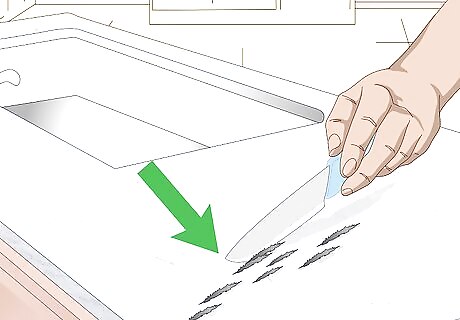
Remove any residue. If there are any areas of the counter that are coated with residue from cooking grease, cleansers, or other substances, scrape it off before sealing the countertop. Use a plastic scraper or knife to carefully remove it. You can also use a single-edged razor to remove the residue, but be very careful because you can easily cut yourself. Hold it at angle as you move it over the marble.
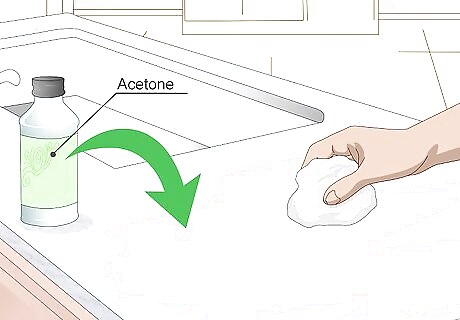
Strip off the old sealer with acetone. With a countertop that’s already been sealed, you should strip off the old sealer before applying a new coat. Wet a clean cloth with acetone and smooth it over the marble. Next, dampen another clean cloth with warm water to remove any residue. Dry the counter with a microfiber towel. Don’t allow the countertop to air dry; wipe it down to dry it.

Spread the sealer over the countertop according to instructions and let it sit. When the countertop is clean and dry, read the sealer’s instructions and apply it as directed. Most sealers require pouring the product onto the counter and using a white cloth to spread it evenly across the surface. You usually must also allow the sealer to soak in for a specified amount of time, which is just 3 to 4 minutes. Always apply the sealer exactly as directed to on its packaging. Some sealers may require alternative application methods.

Wipe the excess sealer away. After you’ve allowed the sealer to soak in for the proper amount of time, you must remove any excess product that hasn’t absorbed. Use a clean dry cloth to wipe it away.
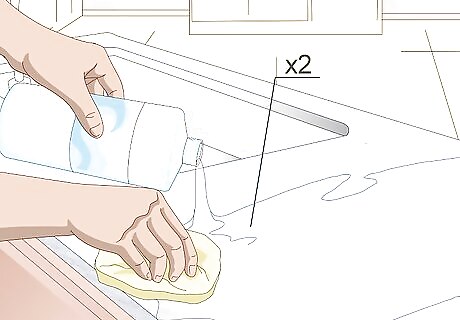
Apply a second coat if necessary. Some sealers may require a second coat. Read the instructions to determine if it’s necessary, as well as the proper procedure for applying it. To keep your countertop stain-free, you should reseal the marble every three to six months.




















Comments
0 comment